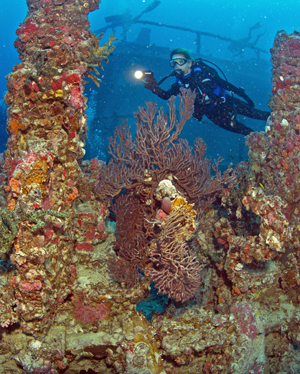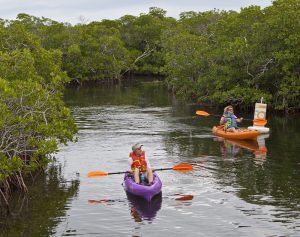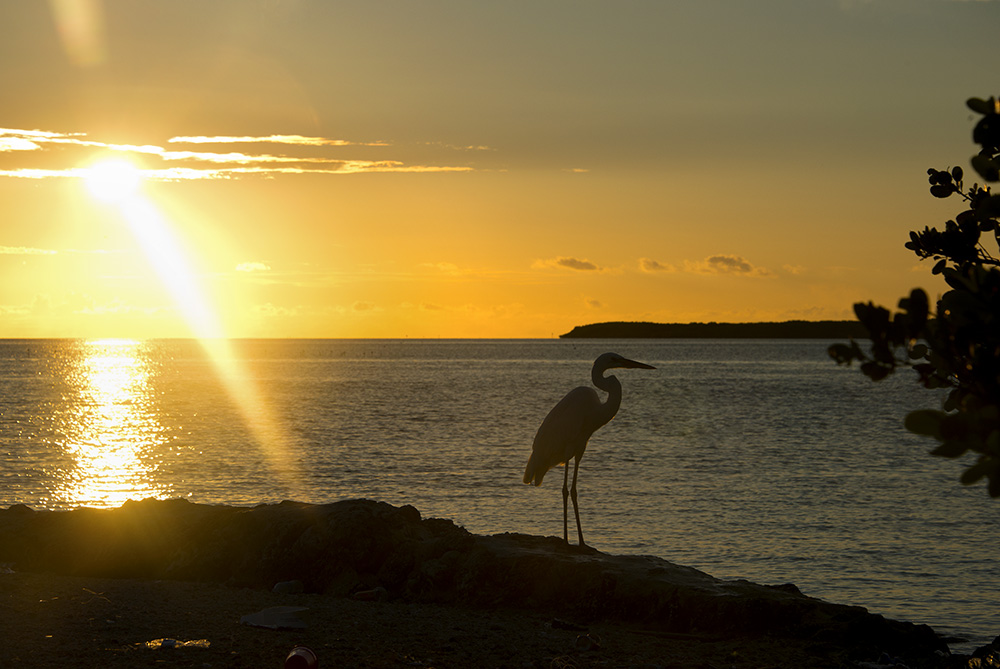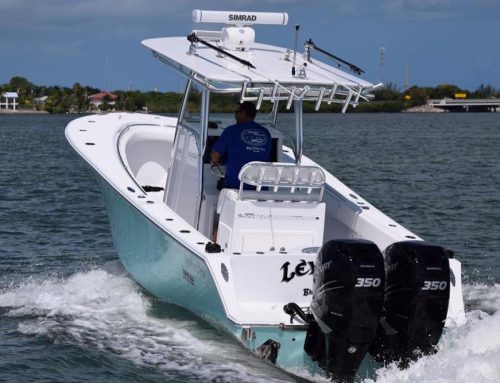Encouraging environmentally responsible behaviors is a vital element of the Florida Keys’ commitment to protecting the region’s natural resources — including the continental United States’ only living coral barrier reef.
But it’s not just Keys residents who can make a difference in the uniquely appealing island chain. Visitors can share in that commitment by following the “10 Keymandments.”

A diver explores a portion of the artificial reef Spiegel Grove off Key Largo in the Florida Keys National Marine Sanctuary. (Photo by Stephen Frink, Florida Keys News Bureau)
While the Bible’s 10 Commandments advise people what NOT to do, the Keymandments advise travelers what they CAN do to have a meaningful, memorable vacation while respecting and helping preserve the Keys environment. Lighthearted yet educational, they’re guidelines for enjoying a simply sustainable travel experience in the laid-back subtropical spot.
ONE: Plant a coral (or adopt one of the cute little things, but don’t touch them on the reef).
TWO: Support the wildlife (volunteer food, funds or time to a local wild bird center).
THREE: Take out the trash (especially if it’s floating in the water).
FOUR: Capture a lionfish (any time and any size — we can show you how).
FIVE: Leave a digital footprint (share pictures with fans, friends and followers).
SIX: Hike it, bike it or hoof it (it’s low on eco-impact and high on fresh tropical air).
SEVEN: Catch dinner (and release all the fish you know you can’t eat).
EIGHT: Use a mooring buoy at dive sites (save your back and leave the anchor alone).
NINE: Conserve vs. consume (reduce, reuse and recycle even on vacation).
TEN: Get off the beaten path (you can hike, bike, walk, kayak or paddleboard along Keys trails).
The Keymandments are a modern-day addition to more than a century of efforts to preserve the Florida Keys environment, and especially the reef paralleling the island chain — the third-largest coral barrier reef system in the world. Much like a tropical rainforest, it supports an incredibly rich diversity of plants and animals.

Kayaking along mangrove trails at Key Largo’s John Pennekamp Coral Reef State Park — the USA’s first underwater preserve — is a fascinating activity for nature enthusiasts. (Photo by Bob Care, Florida Keys News Bureau)
To protect the reef, the Florida Keys National Marine Sanctuary was established in 1990 by the U.S. government. It actually incorporates the waters surrounding the entire land mass that makes up the Keys,
Other environmental milestones have included creating John Pennekamp Coral Reef State Park in Key Largo as America’s first underwater preserve, developing wildlife refuges and pioneering catch-and-release fishing practices.
And in recent years, experts have begun spearheading coral restoration efforts in the Keys, steadily restoring endangered corals by replanting new growths from coral nurseries to the reefs.
As stewards of priceless natural resources, eco-conscious Florida Keys residents and visitors practice a culture of conservation as they eat, drink, sleep, swim, explore and play above, on and beneath the waters surrounding the 125-mile island chain.
Knowledgeable eco-tour guides are eager to share the Keys’ natural world with visitors — whether on a kayaking paddle through tranquil waters and surreal mangrove tangles, an excursion to view playful dolphins in the wild, or a dive or snorkeling trip on the reef.
To whet your appetite for eco-adventures in the enticing island chain, click here. To learn more about the simply sustainable Florida Keys, just click here. And don’t forget … to protect and preserve the Keys’ environmental treasures, ALWAYS obey the 10 Keymandments!





